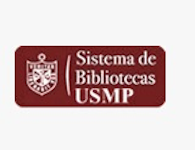| dc.contributor.author | Pinotti, Thomaz | |
| dc.contributor.author | Bergström, Anders | |
| dc.contributor.author | Geppert, Maria | |
| dc.contributor.author | Bawn, Matt | |
| dc.contributor.author | Ohasi, Dominique | |
| dc.contributor.author | Shi, Wentao | |
| dc.contributor.author | Lacerda, Daniela R. | |
| dc.contributor.author | Solli, Arne | |
| dc.contributor.author | Norstedt, Jakob | |
| dc.contributor.author | Reed, Kate | |
| dc.contributor.author | Dawtry, Kim | |
| dc.contributor.author | González-Andrade, Fabricio | |
| dc.contributor.author | Paz-y-Miño, Cesar | |
| dc.contributor.author | Revollo, Susana | |
| dc.contributor.author | Cuellar, Cinthia | |
| dc.contributor.author | Jota, Marilza S. | |
| dc.contributor.author | Santos Jr., José E. | |
| dc.contributor.author | Ayub, Qasim | |
| dc.contributor.author | Kivisild, Toomas | |
| dc.contributor.author | Sandoval, José R. | |
| dc.contributor.author | Fujita, Ricardo | |
| dc.contributor.author | Xue, Yali | |
| dc.contributor.author | Roewer, Lutz | |
| dc.contributor.author | Santos, Fabrício R. | |
| dc.contributor.author | Tyler-Smith, Chris | |
| dc.date.accessioned | 2020-05-28T16:30:50Z | |
| dc.date.available | 2020-05-28T16:30:50Z | |
| dc.date.issued | 2018-12-20 | |
| dc.identifier.citation | Pinotti T., Bergström A., Geppert M., Bawn M., Ohasi D., Shi W., et al. Y chromosome sequences reveal a short beringian standstill, rapid expansion, and early population structure of native american founders. Curr Biol. 2019; 29(1): 149‐157.e3 | es_PE |
| dc.identifier.uri | https://hdl.handle.net/20.500.12727/6107 | |
| dc.description.abstract | The Americas were the last inhabitable continents to be occupied by humans, with a growing multidisciplinary consensus for entry 15–25 thousand years ago (kya) from northeast Asia via the former Beringia land bridge [1, 2, 3, 4]. Autosomal DNA analyses have dated the separation of Native American ancestors from the Asian gene pool to 23 kya or later [5, 6] and mtDNA analyses to ∼25 kya [7], followed by isolation (“Beringian Standstill” [8, 9]) for 2.4–9 ky and then a rapid expansion throughout the Americas. Here, we present a calibrated sequence-based analysis of 222 Native American and relevant Eurasian Y chromosomes (24 new) from haplogroups Q and C [10], with four major conclusions. First, we identify three to four independent lineages as autochthonous and likely founders: the major Q-M3 and rarer Q-CTS1780 present throughout the Americas, the very rare C3-MPB373 in South America, and possibly the C3-P39/Z30536 in North America. Second, from the divergence times and Eurasian/American distribution of lineages, we estimate a Beringian Standstill duration of 2.7 ky or 4.6 ky, according to alternative models, and entry south of the ice sheet after 19.5 kya. Third, we describe the star-like expansion of Q-M848 (within Q-M3) starting at 15 kya [11] in the Americas, followed by establishment of substantial spatial structure in South America by 12 kya. Fourth, the deep branches of the Q-CTS1780 lineage present at low frequencies throughout the Americas today [12] may reflect a separate out-of-Beringia dispersal after the melting of the glaciers at the end of the Pleistocene. | es_PE |
| dc.format.extent | pp. 149-157.e3 | es_PE |
| dc.language.iso | eng | es_PE |
| dc.publisher | Elsevier Ltd. | es_PE |
| dc.relation.ispartof | urn:issn:1690-4648 | |
| dc.relation.ispartofseries | Current Biology;vol. 29, no. 1 | |
| dc.relation.uri | https://doi.org/10.1016/j.cub.2018.11.029 | es_PE |
| dc.rights | info:eu-repo/semantics/openAccess | es_PE |
| dc.rights.uri | https://creativecommons.org/licenses/by/4.0/ | es_PE |
| dc.source | Repositorio Académico USMP | es_PE |
| dc.source | Universidad San Martín de Porres - USMP | es_PE |
| dc.subject | Indios norteamericanos | es_PE |
| dc.subject | Cromosomas humanos Y | es_PE |
| dc.subject | Filogeografía | es_PE |
| dc.title | Y chromosome sequences reveal a short beringian standstill, rapid expansion, and early population structure of native american founders | |
| dc.type | info:eu-repo/semantics/article | es_PE |
| thesis.degree.name | Medicina Humana | es_PE |
| thesis.degree.grantor | Universidad de San Martín de Porres. Facultad de Medicina Humana | es_PE |
| thesis.degree.discipline | Medicina | es_PE |
| dc.subject.ocde | https://purl.org/pe-repo/ocde/ford#3.02.00 | es_PE |








